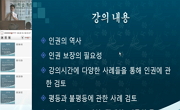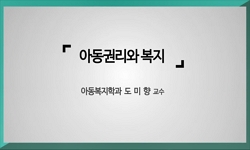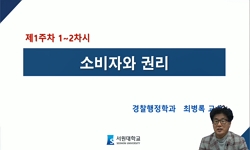Physician-assisted suicide seems to be compatible with respect for humanity and go against it. If you let the suffering and dying man out of his misery, he can die like a human being. But if life is stopped to alleviate pain, pain relief will also los...
http://chineseinput.net/에서 pinyin(병음)방식으로 중국어를 변환할 수 있습니다.
변환된 중국어를 복사하여 사용하시면 됩니다.
- 中文 을 입력하시려면 zhongwen을 입력하시고 space를누르시면됩니다.
- 北京 을 입력하시려면 beijing을 입력하시고 space를 누르시면 됩니다.

평등과 존엄 논증을 통한 의사조력자살의 정당화 = The Justification of Physician-Assisted Suicide through Equality and Dignity Arguments
한글로보기부가정보
다국어 초록 (Multilingual Abstract)
Physician-assisted suicide seems to be compatible with respect for humanity and go against it. If you let the suffering and dying man out of his misery, he can die like a human being. But if life is stopped to alleviate pain, pain relief will also lose its meaning. This is because people who will enjoy pain relief will disappear. Also, if you intend to stop life as a means of mitigating pain, it is against respect for humanity. This is because life is used as a means of relieving pain. But if you respect humanity, you shouldn't treat human life just as a means. To justify physician-assisted suicide, we must solve this difficulty. This paper presents two arguments for this. Equality argument argues that it is allowed to give the opportunity to physician-assisted suicide in accordance with the equality. People who die from natural causes can take an attitude toward their own death. On the other hand, a desperate man who only wants death because of pain does not get such an opportunity. If he could get the opportunity to die like them through physician-assisted suicide, this would be acceptable. Dignity Argument argues that allowing physician-assisted suicide is a better interpretation of respect for humanity than banning it. If physician-assisted suicide is allowed, the suspension of life and the relief of pain is compatible. But if it is not allowed, the preservation of life and the relief of pain is compatible. If the former case proves to be a better interpretation of respect for humanity than the latter case, allowing physician-assisted suicide would be more appropriate for respect for humanity than against it. Thus, through equality argument and dignity argument, we can strengthen the argument for justification of physician-assisted suicide by answering the main counterargument against it.
국문 초록 (Abstract)
고통을 당하며 죽어가는 자를 고통에서 벗어나게 한다면, 그는 인간답게 죽을 수 있다. 하지만 고통 경감을 위해 생명을 중단한다면, 고통 경감도 의미를 잃어버릴 것이다. 고통 경감을 누릴...
고통을 당하며 죽어가는 자를 고통에서 벗어나게 한다면, 그는 인간답게 죽을 수 있다. 하지만 고통 경감을 위해 생명을 중단한다면, 고통 경감도 의미를 잃어버릴 것이다. 고통 경감을 누릴 사람이 사라지기 때문이다. 또한 생명 중단을 수단으로 의도하여 고통 경감을 얻어낸다면, 이는 인간 존중에 어긋난다. 생명이 고통 경감을 위한 수단으로 사용되기 때문이다. 하지만 인간을 존중한다면, 인간 생명도 단지 수단으로 취급하면 안 된다. 의사조력자살을 정당화하려면, 이 난점을 해소해야 한다. 이 논문은 이를 위해 두 개의 논증을 제시한다. 평등논증은 평등 이념에 따라 의사조력사의 기회를 주는 것이 허용된다고 주장한다. 자연사하는 인간은 자신의 죽음에 대해 일정한 태도를 취할 수 있다. 반면 고통으로 인해 오직 죽음만을 바라는 절박한 인간은 그런 기회를 얻지 못한다. 그가 의사조력자살을 통해 그 기회를 얻을 수 있다면, 이는 허용될 것이다. 존엄논증은 의사조력자살을 허용하는 것이 금지하는 것보다 인간 존중에 대한 더 나은 해석이라고 주장한다. 의사조력자살을 허용하면 생명 중단과 고통 경감이 양립하며, 이에 반대하면 생명 유지와 고통 경감이 양립한다. 만약 전자가 후자보다 인간 존중에 대한 더 나은 해석임을 입증한다면, 의사조력자살을 허용하는 것이 반대하는 것보다 인간 존중에 더 부합할 것이다. 따라서 평등논증과 존엄논증을 통해 의사조력자살에 대한 주요한 반론에 답변함으로써 의사조력자살 정당화 논증을 강화할 수 있다.
참고문헌 (Reference)
1 김하열, "생을 마감할 권리에 관한 헌법적 고찰 - 의사조력사를 중심으로 -" 한국법학원 152 : 5-62, 2016
2 이민열, "기본권 제한 심사의 법익 형량" 경인문화사 2016
3 이민열, "가치와 규범의 구별과 기본권 문제의 해결" 한국법철학회 20 (20): 139-186, 2017
4 Feinberg, Joel, "Voluntary Euthanasia and the Inalienable Right to Life" 7 (7): 1978
5 Thomson, Judith Jarvis, "Physician‐Assisted Suicide: Two Moral Arguments" 109 (109): 1999
6 Hill, Thomas E., "Human Welfare and Moral Worth: Kantian Perspectives" Clarendon Press 2002
7 Kerstein, Samuel, "Hastening death and respect for dignity: Kantianism at the end of life" 33 : 2018
8 Kamm, F. M, "Bioethical prescriptions : To create, end, choose, and improve lives" Oxford University Press 2013
9 Velleman, J David, "Beyond Price" 118 (118): 2008
10 Quinn, Warren S, "Actions, Intentions, and Consequences: The Doctrine of Double Effect" 18 (18): 1989
1 김하열, "생을 마감할 권리에 관한 헌법적 고찰 - 의사조력사를 중심으로 -" 한국법학원 152 : 5-62, 2016
2 이민열, "기본권 제한 심사의 법익 형량" 경인문화사 2016
3 이민열, "가치와 규범의 구별과 기본권 문제의 해결" 한국법철학회 20 (20): 139-186, 2017
4 Feinberg, Joel, "Voluntary Euthanasia and the Inalienable Right to Life" 7 (7): 1978
5 Thomson, Judith Jarvis, "Physician‐Assisted Suicide: Two Moral Arguments" 109 (109): 1999
6 Hill, Thomas E., "Human Welfare and Moral Worth: Kantian Perspectives" Clarendon Press 2002
7 Kerstein, Samuel, "Hastening death and respect for dignity: Kantianism at the end of life" 33 : 2018
8 Kamm, F. M, "Bioethical prescriptions : To create, end, choose, and improve lives" Oxford University Press 2013
9 Velleman, J David, "Beyond Price" 118 (118): 2008
10 Quinn, Warren S, "Actions, Intentions, and Consequences: The Doctrine of Double Effect" 18 (18): 1989
11 Velleman, J David, "A Right of Self‐Termination?" 109 (109): 1999
동일학술지(권/호) 다른 논문
-
- 새한철학회
- 정결
- 2020
- KCI등재
-
- 새한철학회
- 강현정
- 2020
- KCI등재
-
- 새한철학회
- 박성호
- 2020
- KCI등재
-
- 새한철학회
- 엄진성
- 2020
- KCI등재
분석정보
인용정보 인용지수 설명보기
학술지 이력
| 연월일 | 이력구분 | 이력상세 | 등재구분 |
|---|---|---|---|
| 2026 | 평가예정 | 재인증평가 신청대상 (재인증) | |
| 2020-01-01 | 평가 | 등재학술지 유지 (재인증) |  |
| 2017-01-01 | 평가 | 등재학술지 유지 (계속평가) |  |
| 2013-01-01 | 평가 | 등재학술지 유지 (등재유지) |  |
| 2010-01-01 | 평가 | 등재학술지 유지 (등재유지) |  |
| 2008-01-01 | 평가 | 등재학술지 유지 (등재유지) |  |
| 2005-01-01 | 평가 | 등재학술지 선정 (등재후보2차) |  |
| 2004-01-01 | 평가 | 등재후보 1차 PASS (등재후보1차) |  |
| 2003-01-01 | 평가 | 등재후보학술지 유지 (등재후보2차) |  |
| 2002-01-01 | 평가 | 등재후보 1차 PASS (등재후보1차) |  |
| 2001-01-01 | 평가 | 등재후보학술지 선정 (신규평가) |  |
학술지 인용정보
| 기준연도 | WOS-KCI 통합IF(2년) | KCIF(2년) | KCIF(3년) |
|---|---|---|---|
| 2016 | 0.75 | 0.75 | 0.68 |
| KCIF(4년) | KCIF(5년) | 중심성지수(3년) | 즉시성지수 |
| 0.68 | 0.68 | 1.432 | 0.33 |




 DBpia
DBpia






